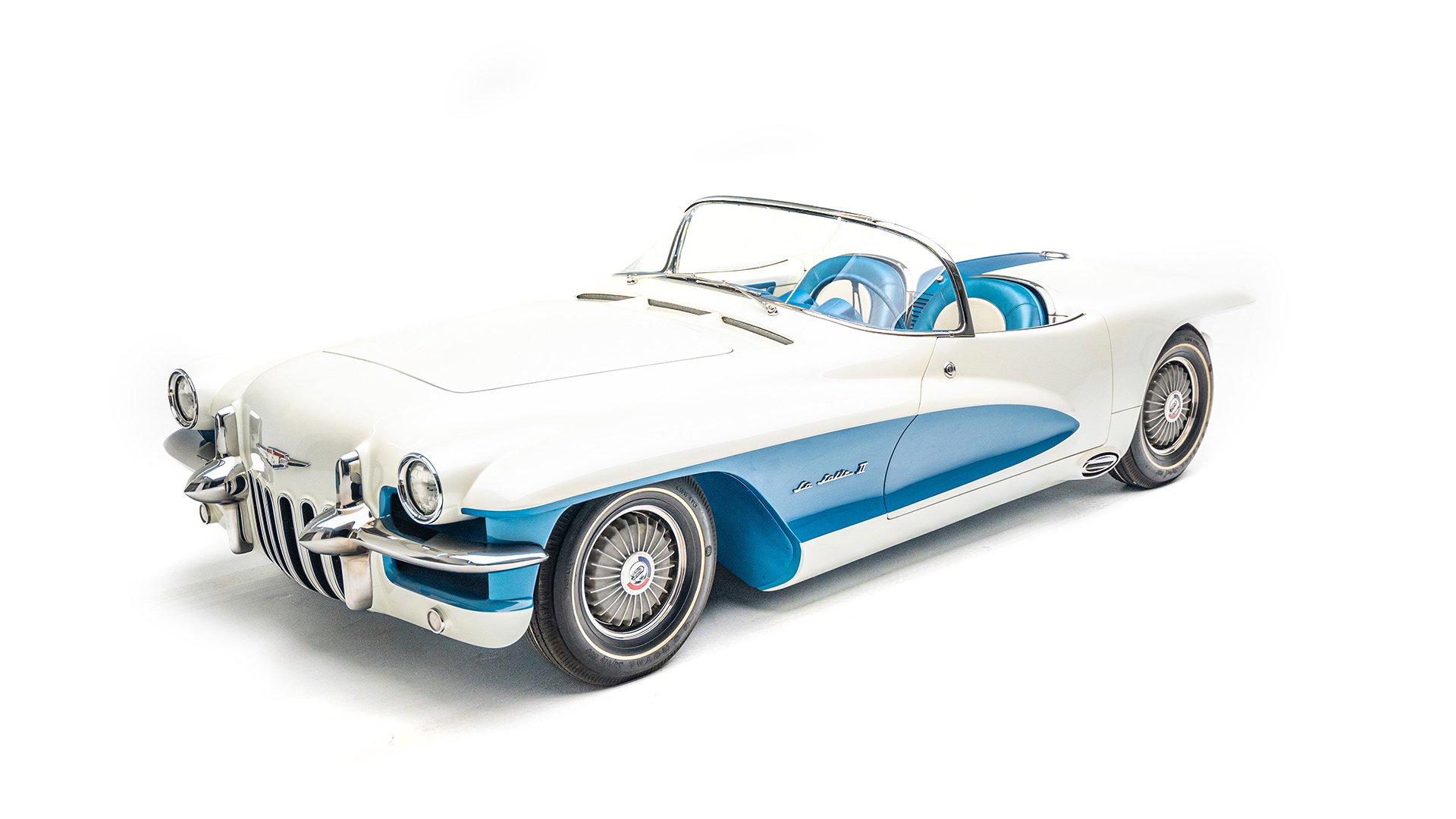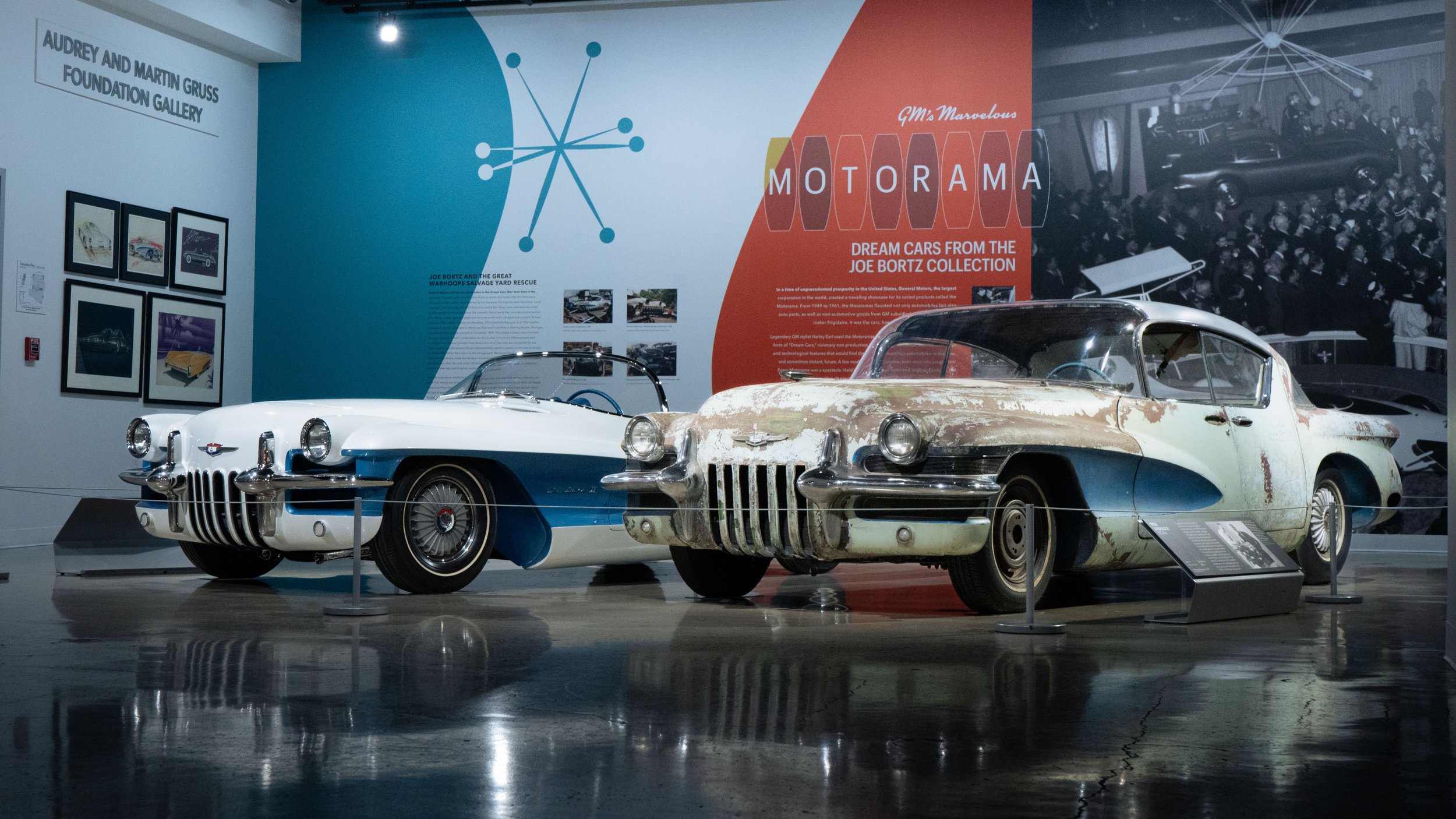Carl Renner: GM Designer
Originally published on May 21st, 2024. Special thank-you to Jonathan ‘Jonee’ Eisen for making this article possible.
The work began. Mr. Earl wanted a new idea.”
-Carl Renner, Corvette Hall of Fame Inductee 2007
One of the creative minds behind Harley J. Earl’s famed special design team was Carl Renner, a gentleman who was in part responsible for a number of important designs, many of which he remains uncredited for due to the secretive nature of the team.
This is the story of Carl Renner, a Corvette Hall of Fame inductee, who contributed to major aspects of cars during the era of the famous GM Motoramas. Outside of the designs he was best known for, such as the Chevrolet Nomad, Corvette, and LaSalle Sedan & Roadster II, he worked on numerous projects; it may be more accurate to say that these are not the cars he is best known for, rather, they are simply the cars we know about.
LaSalle Roadster render by Carl Renner, Bortz Auto Collection Archives, via oldcarsweekly.com
Carl Renner: Origins
Carl Renner was born on February 12, 1923, in Nuremberg, Germany. Carl credited his interest in the automotive industry in part to his father, Frank Renner, who was a die and tool maker for BMW. Frank moved his family to the United States in 1927, where Carl attended school and performed remarkably well. He took an interest in design at a young age, initially wanting to be an architect.
In the spring of 1940, Renner saw Harley J. Earl cruise by in a black boat-tail convertible – presumably the famed Buick Y Job, otherwise known as the first ever concept car – and immediately could tell it was special. After graduating from Cass Technical School in 1940, Renner worked for his father at Kelsey Hayes, a wheel manufacturing company. Renner later said that his time working with casting, stamping, heat treating, and chrome plating was vital to his work in automotive design.
Flickr/Wikimedia, 1939 Harley Earl and “The Y Job”
In 1943, Renner had saved up enough money to move to California where he would schedule an interview with Disney as a cartoonist. Mr. Disney himself reviewed Renner’s portfolio when he helped Renner pick up his dropped car designs and drawings–to which Disney said, “don’t worry – you’re hired.”
After the initial excitement wore off, Renner found himself dissatisfied that he was being told what to create, rather than being given the opportunity to be creative. Shortly thereafter he moved back to Detroit, and took on another design job with the same feeling of dissatisfaction; his creativity unengaged and feeling generally asleep at the wheel when it came to his work.
Renner crossed paths with an independent designer who worked with GM, who told Renner to go and apply with General Motors’s design team. Although they weren’t hiring at the time, due to the department being closed during World War II, early in 1945 Renner got a call and was told that the team was open and hiring once more. He was given a job as a junior designer on the strength of his work at Disney. Renner worked for GM creating informational cartoons for employees. The irony is not lost that cars helped Renner land a job at Disney, and cartoons landed him a job at General Motors.
1946 was spent studying at the Detroit Institute for Automotive Style, a GM program created by Harley J. Earl. Renner ended up being one of only two students that survived the program. At his graduation, he was assigned to the GM branch, and would later work directly under the man he saw driving the black boattail convertible.
Carl Renner: Secretive Designer
Renner worked as a senior designer in the Chevrolet studio for 7 years, contributing on a number of projects, including Project Opel (Later known as the Corvette), but the level of secrecy at GM under Earl’s leadership makes it intentionally difficult to verify claims on who did what. The consensus between documentation and legend is that he designed a number of features and elements that would appear on both the Corvette concept and on later Corvette production cars. He was promoted to Assistant Chief Designer in 1953 and moved to the illustrious 9th-floor; Earl’s floor for top secret projects.
His first design after being promoted got him on everyone’s radar–a task to create a station wagon on a Corvette chassis. At the specific request of Earl, Renner designed this car as the counterpart to the Bel Air and Chevrolet Impala. The design, known as the Waldorf Nomad or the Corvette Nomad, was a huge hit when they presented it at the 1954 GM Motorama. Public reception was so positive that Earl ordered that the concept become a reality. The final product was not a Corvette, but the Bel Air Nomad, which took the roofline from the Motorama concept and put it on the A-body Bel Air platform.
In 1954, following the success of the Nomad, Earl gave Renner his own studio and they set to work creating a car for the 1955 GM Motorama show. Letting creativity and design drive the process, Renner started by creating a dozen concepts – sedans, trucks, sports cars, bubble cars, rocket cars, anything and everything was on the table for a Motorama car. The pair landed on a sports car, which would become the LaSalle Roadster II, and its complementary LaSalle Sedan II. Elements of the LaSalles would appear on the Chevrolet Biscayne of the same GM Motorama year, as well as on the production, facelifted 1956 Chevrolet Corvette.
Under Earl’s leadership, and with contributions by Renner and other members of the design team, GM made leaps and strides for the automotive design industry. Though we are privy to only part of what Renner’s contributions were, the mentality of the time emphasized that the team as a whole shared in both successes and failures, never singling out any member in particular and elevating the prestige of the design department as a whole.
Carl Renner, XP-100 Sketch, deansgarage.com
Which in reality, reflects the design process; one designer may come up with an overall design, or style particular elements, but it’s rare that an entire car is designed by one person, and for the end result to stay that way. Earl would take separate pieces designed by different artists, and put it into one cohesive design; cherry picking his favorite pieces and putting it into one concept or production car. We do know that Earl and Renner shared a close working relationship all the way until Earl’s retirement in 1958, and Renner had contributed to numerous projects in that time.
From manufacturing wheels to working on Cartoons for Disney, then embarking on a 35 year career at GM, Renner had quite a story to tell. His colleagues at GM noted, in the 2011 YouTube video produced by the Corvette National Museum, that he was always upbeat and humble, having something positive to say about his team and the work they did.
Carl Renner: LaSalle Roadster II and LaSalle Sedan II
On display at the Petersen Automotive Museum are both the Roadster and Sedan variants of the LaSalle II Motorama cars that were unveiled in 1955. First lost and then found, the pair of LaSalles have a story of their own outside of the design.
Visit our article on the story of how Joe Bortz rescued some of the cars in our exhibit. One restored, one left in its original condition, it tells the story of how decrepit time and neglect can make a car, and how much care and time must be put into a car to restore it into its original condition. To learn more about the exhibit, visit our exhibit page on our website.
If you want to see these cars and more in the GM’s Marvelous Motorama exhibit, buy tickets at petersen.org/tickets and visit us today!






